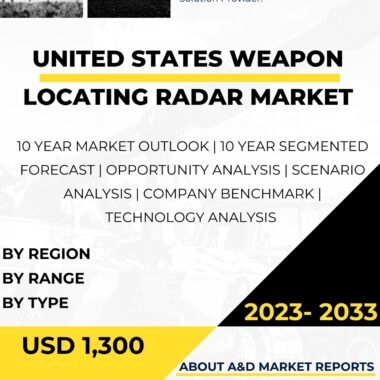Description
The India Close-in Weapons Systems (CIWS) market is a vital and rapidly evolving segment of the country’s defense industry, providing essential capabilities for safeguarding naval vessels and critical installations against close-range threats such as anti-ship missiles, aircraft, and small boats. CIWS are advanced weapon systems designed to provide rapid and effective defense against incoming threats in the last line of defense. As India faces diverse security challenges, including threats from hostile neighboring nations and asymmetric warfare, the adoption and development of advanced CIWS have become crucial for enhancing its naval defense capabilities and ensuring the protection of its maritime assets.
The adoption of advanced CIWS in India’s defense forces is driven by the need to protect naval vessels and critical installations from imminent threats. These systems offer rapid target acquisition and tracking capabilities, enabling them to respond swiftly to incoming threats and neutralize them before they can inflict damage. The acquisition and integration of advanced CIWS bolster India’s naval defense posture and provide a critical layer of protection for its naval assets.
Strategic partnerships and collaborations with foreign technology providers and domestic defense industry players have played a vital role in bolstering India’s access to advanced CIWS technologies. Collaboration with key allies and international manufacturers allows India to leverage cutting-edge research, development, and technology transfer, accelerating the adoption and integration of these advanced systems into its naval capabilities.
The integration of advanced technologies in CIWS has revolutionized their capabilities. Advanced sensors, radars, and fire control systems enable rapid detection and tracking of incoming threats, while high-rate-of-fire guns or missile systems provide the firepower to neutralize the threats effectively. Additionally, advancements in data processing and artificial intelligence algorithms have enhanced the accuracy and response time of CIWS, making them highly effective in countering multiple threats simultaneously.
Indigenous development is another critical aspect of the India CIWS market. The country’s defense industry is actively investing in research and development initiatives to design and manufacture its own advanced CIWS tailored to India’s specific naval requirements. Indigenous development not only reduces dependency on foreign suppliers but also fosters technological advancements and strengthens India’s self-reliance in critical defense technologies.
The need to safeguard maritime interests, protect naval assets, and enhance maritime security has further driven the demand for advanced CIWS in India. As the country seeks to modernize its naval fleet and strengthen its naval defense capabilities, the incorporation of cutting-edge CIWS technology becomes a crucial element in achieving naval superiority.
India’s extensive coastline and strategic maritime interests further emphasize the importance of advanced CIWS capabilities in its naval defense arsenal. From patrolling maritime borders to safeguarding critical installations, the availability of advanced CIWS enhances India’s ability to respond effectively to close-range threats in its maritime domain.
The continuous advancement of CIWS technologies ensures that India remains at the forefront of naval defense capabilities. As the country continues to invest in technology development, testing, and integration, it positions itself to effectively address evolving maritime security challenges and maintain readiness and effectiveness of its naval forces in an ever-changing security landscape.
The responsible use of advanced CIWS is essential to ensure adherence to international laws and norms concerning the conduct of naval operations. India places a high priority on responsible CIWS usage and ensures that its naval personnel are trained in the proper handling and application of these systems.
India’s defense industry also contributes to international defense cooperation efforts. The availability of advanced CIWS allows India to participate in joint naval exercises and cooperation with other countries on maritime security, contributing to regional security and stability.
In conclusion, the India Close-in Weapons Systems market serves as a critical component of the country’s defense and maritime security strategy, providing essential capabilities for safeguarding naval vessels and critical installations. The adoption of advanced CIWS strengthens India’s naval defense capabilities, contributing to enhanced maritime security and protection of its naval assets. The integration of advanced technologies and indigenous development efforts bolster India’s access to cutting-edge CIWS, reinforcing its position as a capable and responsible player in the global defense industry. As the country continues to invest in technology development and adheres to international norms, it positions itself at the forefront of naval defense capabilities, contributing to enhanced defense readiness and effectiveness in an ever-changing security landscape. The strategic use of advanced CIWS underscores India’s commitment to safeguarding its maritime interests, protecting naval assets, and contributing to regional security and stability.




